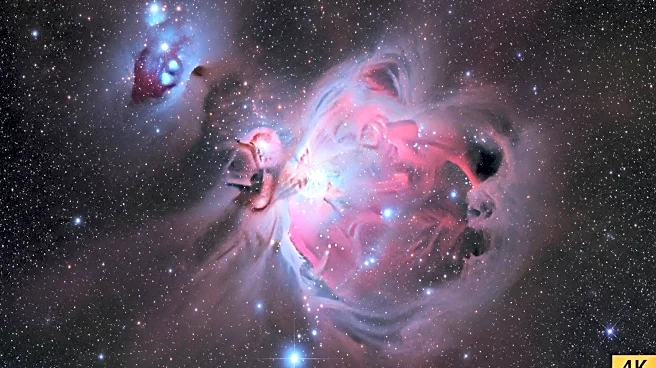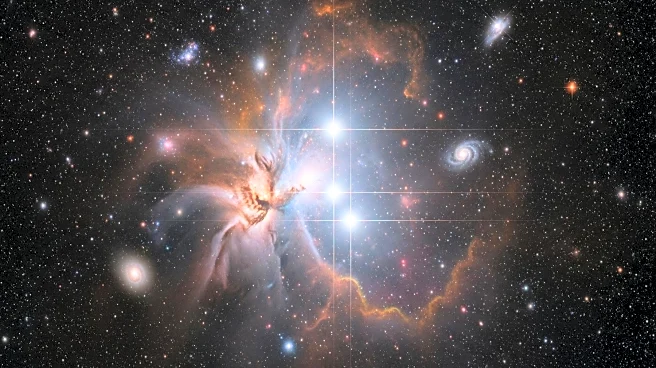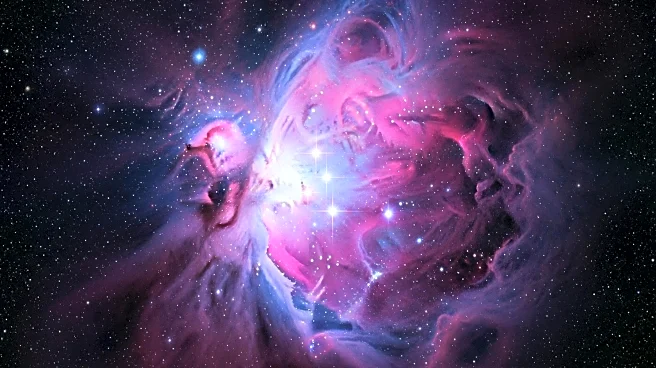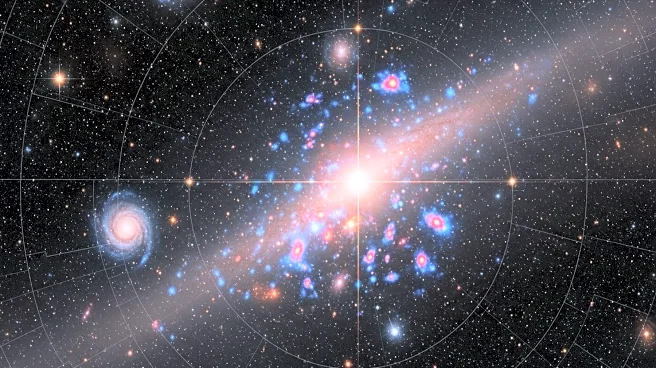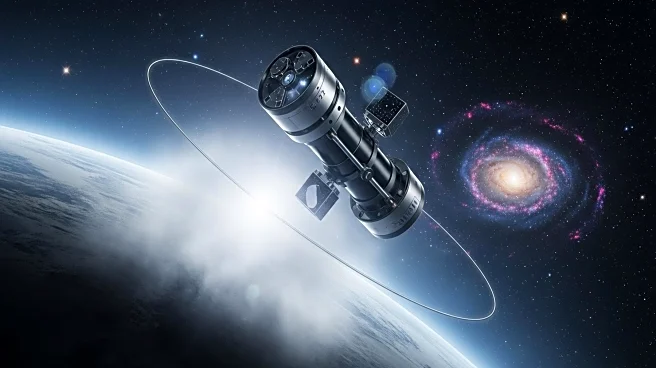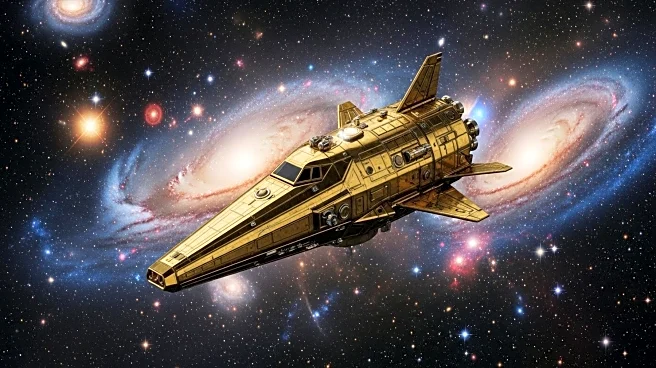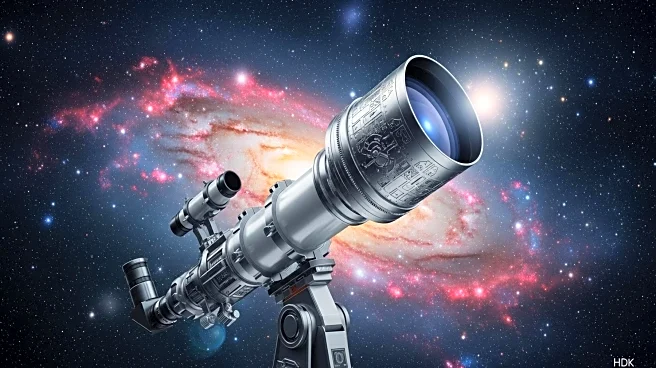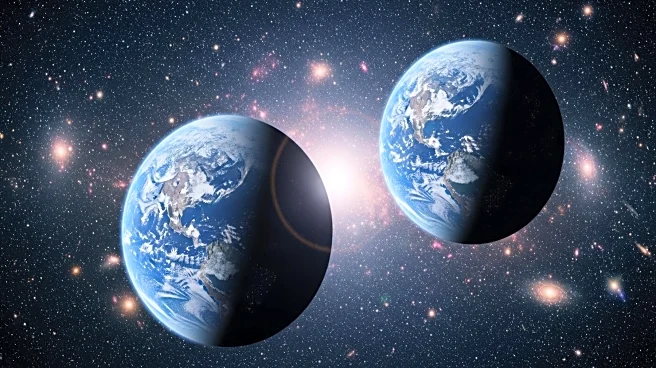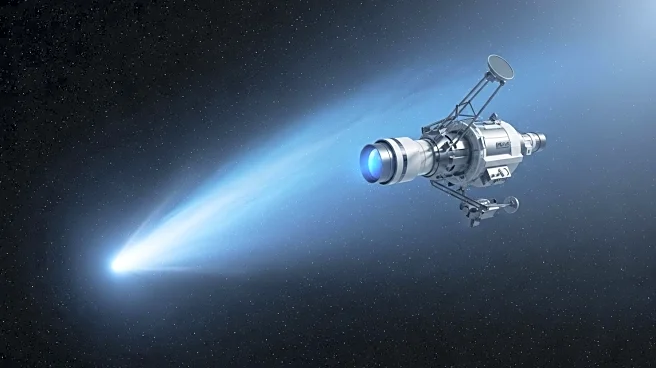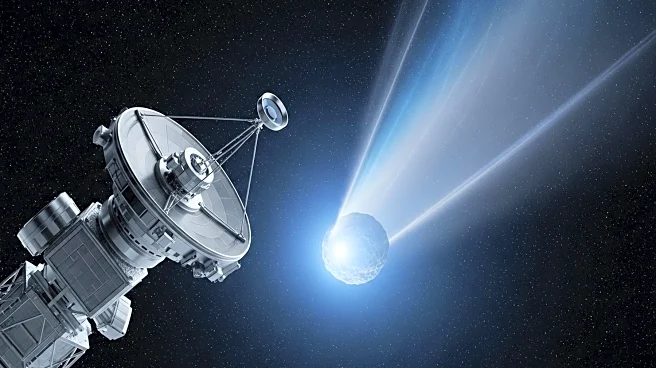What's Happening?
NASA's Webb Space Telescope has released a breathtaking image of thousands of newborn stars in the Lobster Nebula, located 5,500 light-years away. The image reveals a dramatic cloud of star-forming dust and gas, with the cluster of infant stars, Pismis 24, situated deep inside. The nebula's massive size extends beyond the camera lens, showcasing the vastness of this star-birthing region. The Webb Telescope, launched in 2021, is the largest and most powerful telescope ever sent into space, capturing the universe in infrared light.
Why It's Important?
The image of the Lobster Nebula provides a unique glimpse into the processes of star formation and the conditions within stellar nurseries. By studying these regions, astronomers can gain insights into the early stages of star development and the factors that influence the birth of stars. The Webb Telescope's ability to capture such detailed images enhances our understanding of the universe and the life cycles of stars. This discovery also highlights the telescope's capabilities in exploring distant cosmic phenomena, contributing to the advancement of astronomical research.
